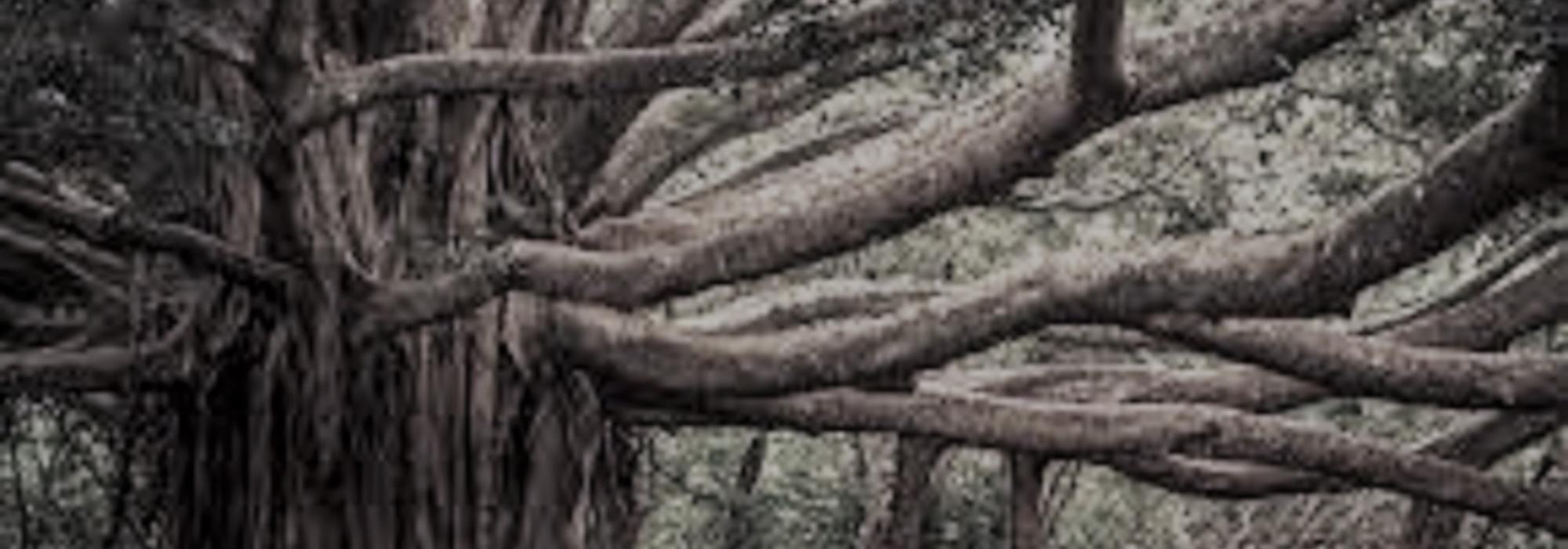Early next morning they heard a resounding thunder in the cloudless sky. When the sages turned to Divākaradeva questioningly, he said, ‘This is the sound made by the kettle drums in the air-chariots. Since it’s coming from inside, it sounds like thunder. Here comes our master now, lo behold!’ The sky acquired a tinge of gold as if it were enveloped in the colours of rainbow and lightning. Then, several air-chariots glowing with hues of an array of precious stones became visible. The emperor’s chariot landed right in front of Kāśyapa’s hermitage. The other ones landed on the peaks, valleys and slopes of the hills around mount Asita. The emperor and his queens approached and bowed down to Kāśyapa and Pālaka. Shedding tears of joy, Kāśyapa said, ‘Be seated, son! Blessings are given so that one may come to acquire what he does not yet possess. But ageless ones like you already possess all that which even blessings cannot bring. However, since it is in keeping with good etiquette to make conversation on occasions like these, let me just say this: May you enjoy your benign riches forever, even after this great eon comes to an end!’
Then, deferring to Pālaka’s wishes, Gomukha informed Kāśyapa and others, the names and lineages of Naravāhanadatta’s queens.
After they exchanged pleasantries, the emperor said to the sages, ‘O venerable ones, please ask Ipphaka as to why he abducted queen Surasa-mañjarī and her husband Avanti-vardhana, who was at that time, lost in thoughts about the carnival’. In response, Ipphaka said, ‘Utpalahastaka gave me his daughter’s hand first. But later he went back on his word, and had Surasa-mañjarī marry Avanti-vardhana instead’. Utpalahastaka said “That is true, but Ipphaka is concealing an important detail. Long ago, after I was cursed by sage Nārada, I asked Ipphaka several times to take my daughter’s hand, for she was promised to him. But he shunned me every time disdainfully, saying, ‘Whoever will wed a woman from a family cursed by a sage?’. Only after he spurned me several times did I give my daughter to Avanti-vardhana! If you do not believe me, please ask these vidyādharas and Gaṇeśvara!”. The witnesses affirmed what Utpalahastaka had stated. Having heard everything, Sage Kāśyapa said to Ipphaka, ‘O skyfarer! As a punishment for your wicked deed, you are hereby cursed to go to Kāśī and atone for your sins. There you shall carry corpses to Gaṅgā, and attire yourself only with the clothing of the dead brought in for cremation. You shall make the cremation grounds your home, and sustain yourself only through alms. You must do this for a whole year in order for your curse to be lifted!’.
Knowing that Naravāhanadatta would be there, many people from Ujjayinī had travelled all the way to Mount Asita to see him. Thus, even those who were blind by birth, those who had lost sight due to old age, handicapped people, and scores of children had come all the way, despite great difficulty. Thus, the whole forest was filled with a multitude of people. ||126||
Thus ends the third chapter of Bṛhatkathā-śloka-saṅgraha composed by Budhasvāmi
Chapter 4 - Bṛhatkathā-śloka-saṅgraha
Later, Āryuṣa Kāśyapa, in the presence of the other sages and their wives, Pālaka and friends, asked Naravāhanadatta, the emperor of vidyādharas, ‘O ageless one! All these sages, Pālaka and I are very keen to listen to your story. How did you acquire such hard to find riches? How did you meet your wives for the first time? You have to tell us all this!’. Listening to the sage’s words, Naravāhanadatta turned pale. He thought, “What a predicament! Wouldn’t someone with a wavering mind who strays close to fire, feel its heat? How can I bring myself to say things like: ‘This queen fell deeply in love with me; this other one carried me away out of love’! Can anyone in their right mind narrate all this in front of one’s elders? Also how can I even extol my own valour using words like: ‘I slayed this mighty enemy, or that formidable foe surrendered to me!’. If I start singing my own peans in front of all these valorous men, won’t it be unbecoming of me? I am stuck in a moral dilemma now. If I don’t speak, I’ll incur the sage’s wrath. If I speak, I’ll be a sinner who eulogies himself. Oh! Perhaps I have no choice now but to choose the lesser of the two evils! Although mother Gaurī had blessed me saying ‘Son! Think of me when you come to hard times!’, it won’t be fair to do so in moments such as these” and became worried. Right then, miraculously, goddess Gaurī appeared there, resplendent more than the Sun. She said ‘Naravāhanadatta! Worry not! All these sages, your uncle, the women, friends and kings gathered here will be able to listen to only what is appropriate for them’. Then she manifested as goddess Sarasvatī herself and issued forth as the wondrous story which Naravāhanadatta began to narrate:- ‘O Sages! Uncle! Friends! Kings! Ladies! May you listen to this story with rapt attention! In the kingdom of Vatsa on the banks of Kālindī, there’s the city of Kauśāmbī, which is truly, mother earth’s very heart! It is ruled by the great king Udayana. ||14|| - and so on.
Concluded
The current article is a translation of Prof. A R Krishnasastri’s Kannada classic Kathāmṛta. The translation has been rendered by Raghavendra G S, Arjun Bharadwaj, Srishan Thirumalai, and Hari Ravikumar.
The original Kannada version of Kathāmṛta is available for free online reading. So are the other works of Prof. Krishnasastri















































